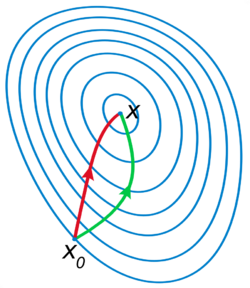🛟 Tips for exercises#
tutorial exercises are organized in problem sets labeled with greek letters
Week |
Topic |
||
|---|---|---|---|
\(\alpha\) |
alpha |
2 |
|
\(\beta\) |
beta |
3 |
|
\(\gamma\) |
gamma |
4 |
|
\(\delta\) |
delta |
5 |
|
\(\epsilon\) |
epsilon |
6 |
|
\(\zeta\) |
zeta |
7 |
|
\(\eta\) |
eta |
8 |
|
\(\theta\) |
theta |
9 |
|
\(\iota\) |
iota |
10 |
|
\(\kappa\) |
kappa |
11 |
|
\(\lambda\) |
lambda |
12 |
these questions are not directly assessable
the aim is to help you better understand the material and start to prepare for actual assessments
solutions for selected exercises are provided
this is an upper level course on mathematics for economists that pushes you beyond the boundaries of the kind of things we do in high school or first year university
many people find this material hard at first, however, the experience is that anyone who works diligently and consistently can and will do well
Tips on how to do well in this course#
If you are having no particular problems with this course then please carry on the exercises.
If, on the other hand, you are having difficulty with the material, then please read on.
Here are few tips on getting through and doing well:
It’s hard to “wing” this course, even if you did well at maths in high school. It’s also very hard to follow everything just from the lectures. It takes practice to do well, just like playing guitar or learning a language. The first resource is the lecture notes, and the more often you read them the more the definitions will stick and the material will gel in your head.
Each time you are having difficulty with a new concept try googling it. Have a look at Wikipedia, find a video on YouTube, or some of the other online resources. They might phrase or explain the concept in a way that fits better with your brain.
Work consistently throughout the semester. Concepts become clearer and more familiar the more times that you go over them—with at least one sleep in between to allow your brain to organize neurons and synapses to store and categorize this new information.
Make use of your tutors. They are very knowledgeable and are willing to put in time to help anyone who is genuinely trying (although much less inclined to help those who aren’t).
Above all, remember that the course material is nontrivial for a reason. Doing straightforward calculations applying well known rules or memorizing “cookbooks” of facts are not particularly useful, mainly because computers are far, far better than humans at these kinds of activities. What is still very useful—probably more than ever—is understanding concepts and how they relate to each other, and building up your ability to digest technical material and think in a logical way. If you complete this course successfully you will have significantly upgraded your mathematical skills.
Finally, here are some tips on doing proofs:
In many instances there will be an easy way to do things, if you can spot it. A question that seems to require a long calculation will likely have an easy answer if you know the relevant fact.
If you feel stuck, remember that the hardest step is getting started, and for proofs the best place to start is always the relevant definitions. If you are asked to show that the range of a given function is a linear subspace, start by writing down those two definitions. They will tell you more specifically what you need to show. If you’re still stuck, review any facts from the lecture notes related to those definitions.
Is there a different way to describe the range of this function?
Is there some fact related to linear subspaces that might be helpful?
If you’re still stuck, try flipping the problem around.
Suppose that the range of the function is not a linear subspace. What would that imply?
Can you show that such an outcome is impossible?
Be patient and don’t rush. You’ll get quicker naturally, with practice.
